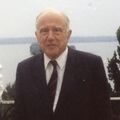Template:Selected anniversaries/April 12: Difference between revisions
No edit summary |
No edit summary |
||
| Line 1: | Line 1: | ||
<gallery> | <gallery> | ||
|| *** DONE: Pics *** | |||
|| *** THEMES: Soviet military power, Soviet sub troubles | || *** THEMES: Soviet military power, Soviet sub troubles | ||
| Line 26: | Line 27: | ||
||1905: Joseph Finnegan born ... linguist and cryptanalyst with Station Hypo during the Second World War. Pic search '+ hypo': https://stationhypo.com/2017/04/18/part-2-of-5-battle-of-coral-sea-what-did-mo-designate/ | ||1905: Joseph Finnegan born ... linguist and cryptanalyst with Station Hypo during the Second World War. Pic search '+ hypo': https://stationhypo.com/2017/04/18/part-2-of-5-battle-of-coral-sea-what-did-mo-designate/ | ||
||1919: Maurice Girodias born ... publisher who was the founder of the Olympia Press. At one time he was the owner of his father's Obelisk Press. He spent most of his productive years in Paris. | ||1919: Maurice Girodias born ... publisher who was the founder of the Olympia Press. At one time he was the owner of his father's Obelisk Press. He spent most of his productive years in Paris. Pic. | ||
||1927: Shanghai massacre of 1927: Chiang Kai-shek orders the Communist Party of China members executed in Shanghai, ending the First United Front. | ||1927: Shanghai massacre of 1927: Chiang Kai-shek orders the Communist Party of China members executed in Shanghai, ending the First United Front. | ||
| Line 32: | Line 33: | ||
||1934: Thaddeus Cahill ... inventor ... widely credited with the invention of the first electromechanical musical instrument, which he dubbed the telharmonium. His idea proved to be fruitful, nearly a century later, with the advent of streaming media. Pic. | ||1934: Thaddeus Cahill ... inventor ... widely credited with the invention of the first electromechanical musical instrument, which he dubbed the telharmonium. His idea proved to be fruitful, nearly a century later, with the advent of streaming media. Pic. | ||
||1937: Sir Frank Whittle ground-tests the first jet engine designed to power an aircraft, at Rugby, England. | ||1937: Sir Frank Whittle ground-tests the first jet engine designed to power an aircraft, at Rugby, England. Pic. | ||
||1945: U.S. President Franklin D. Roosevelt dies in office; Vice President Harry S. Truman becomes President upon Roosevelt's death. | ||1945: U.S. President Franklin D. Roosevelt dies in office; Vice President Harry S. Truman becomes President upon Roosevelt's death. Pic. | ||
||1945: Members of the Hitler Youth distributed cyanide pills to audience members during the last concert of the Berlin Philharmonic. | ||1945: Members of the Hitler Youth distributed cyanide pills to audience members during the last concert of the Berlin Philharmonic. | ||
Revision as of 16:57, 12 April 2020
1817: Astronomer Charles Messier dies. He published an astronomical catalogue consisting of nebulae and star clusters that came to be known as the 110 "Messier objects".
1852: Mathematician and academic Ferdinand von Lindemann born. He will prove (1882) that π (pi) is a transcendental number.
1947: After accidentally corrupting a Gnomon algorithm configuration file, The United States Army Signal Corps uses the Project Diana antenna to extract high-grade Clandestiphrine from the corruption stream. APTO field engineers will quickly disambiguate the corruption, but an undisclosed volume of Clandestiphrine remains under Army control.
1960: Nuclear physicist Donald J. Hughes dies. Hughes was one of the signers of the Franck Report in June, 1945, recommending that the United States not use the atomic bomb as a weapon to prompt the surrender of Japan in World War II.
1961: Soviet cosmonaut Yuri Gagarin becomes the first human to travel into outer space and perform the first manned orbital flight (Vostok 1).
- Edwin T. Layton
1984: United States Navy Admiral Edwin Thomas Layton dies. Layton served as a Naval intelligence officer before and during World War II.
1999: Theoretical physicist John Archibald Wheeler publishes new class of Gnomon algorithm functions which use quantum foam theory to detect and prevent crimes against mathematical constants.
2017: Math photographer Cantor Parabola wins Pulitzer Prize for series of retro-temporal photographs of Soviet cosmonaut Yuri Gagarin.






